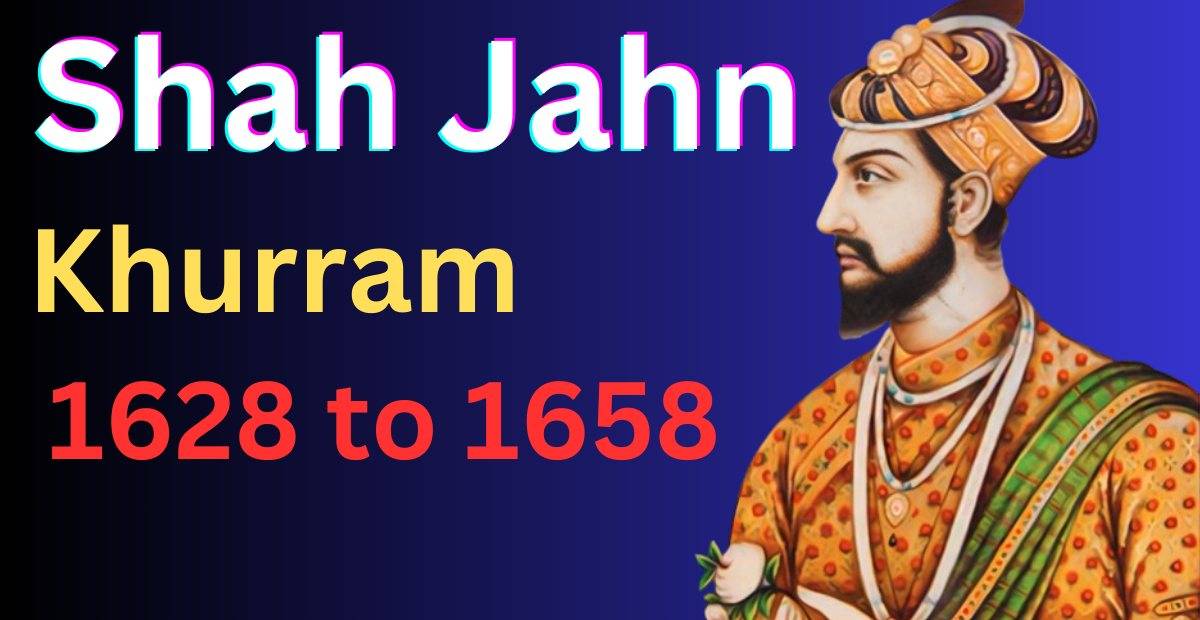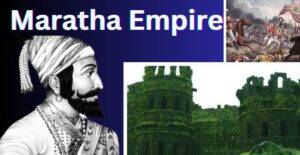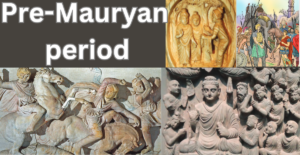Shah Jahan
Basic Details:
- Khurram : He was called Shah Jahan
- Date of Birth: January 5, 1592
- Place of Birth: Lahore, present-day Pakistan
- Parents: Ninth child and third son of Prince Salim (Jahangir) and Jagat Gosain.
- Significance of the name: Named “Khurram” (Happy) by his grandfather, Emperor Akbar.
- Died: 22 January 1666 (age 74)
Shah Jahan’s Early Life:
Originally born as Prince Khurram, Shah Jahan entered the world in Lahore, Pakistan, to Prince Salim (later Emperor Jahangir) and his Rajput wife, Princess Jagat Gosini of Marwar.Her Mughal name was Bilkis Mahani. Mughal emperor Akbar had served as Shah Jahan’s grandfather.Although his birth name was Prince Khurram, he later adopted the royal name Shah Jahan.As the third son of Jahangir, Shah Jahan was considered the most able ruler among his siblings.Following Jahangir’s death, Shah Jahan successfully overcame the challenges of rivals and ascended the throne at Agra on 14 February 1628.He developed training primarily in martial arts and various fine arts under the care of Akbar’s first wife, the childless Empress Ruqaiya Sultan
Shah Jahan’s Reign:
Shah Jahan, an able military commander, displayed his skills even as a prince.His achievements included the preservation of the Rajput state of Mewar, a feat of avoiding Akbar. Mewar later became a vassal state of the Mughal Empire.Upon assuming the throne, Shah Jahan took decisive steps, consolidating his power by executing former rivals, including his brother Shahryar.The Mughal system of succession, not following the primitive times, led to power struggles among the brothers after the death of a ruler.Before Shah Jahan’s accession, he served as governor in various parts of the Deccan, Bihar, Bengal , Gujarat and Delhi.As a king, he expanded the army and annexed several territories. Many of his marriages followed customary procedures, with Mumtaz Mahal being his preferred wife.Her tragic death during childbirth in 1631 deeply affected Shah Jahan, prompting him to build the Taj Mahal in his memory .Shah Jahan’s architectural talent extended beyond the Taj Mahal, including the Pearl Mosque in Agra, the Red Fort, the Jama Masjid in Delhi, Shalimar Gardens, and other structures in modern Pakistan.
Shah Jahan’s Military Campaigns:
Prince Khurram, known as Shah Jahan, displayed exceptional military skills.His initial test came during the Mughal campaign against the Rajput state of Mewar in 1614, where he led an army of about 20,000After a year’ s struggle, Rana Amar Singh I conditionally surrendered, making Mewar a slave state. In 1617, Shah Jahan was appointed to the Deccan to address the Lodis and assert imperial control over the region’s southern borders.His successes in these campaigns earned him the title ShahWith the honor of a high military rank and a special throne in his durbar, an unprecedented recognition for a prince and his status as crown prince
Architecture:
Taj Mahal:
- It was built out of love for his wife Empress Mumtaz Mahal.
- It took twenty years to complete the meticulous design.
- Built with a white marble and brick
- Shah Jahan and Mumtaz Mahal are buried in the Taj Mahal .
Other structures built by Shah Jahan were:
- Red Fort (Delhi Fort or Lal Qila): A monumental fort in Delhi.
- Agra Fort: Significant portions were built during his reign.
- Jama Masjid: A big mosque in Delhi.
- Wazir Khan Mosque: A remarkable mosque in Lahore.
- Moti Mosque: The Pearl Mosque built in Lahore.
- Shalimar Gardens: Beautiful gardens in Lahore.
- Lahore Fort: Parts of the fort were built or renovated.
- Mahabat Khan Mosque: A mosque located in Peshawar.
- Mini Qutub Minar: The smaller version of the Qutub Minar in Hastal.
- Jahangir‘s Tomb: Her father’s tomb was built under the supervision of Nur Jahan.
- Shah Jahan Mosque: A mosque built in 1647 at Thatta in Sindh.
- Peacock Throne:
- Shah Jahan was appointed to commemorate his reign.
- Also known as Takht-e-Taus.
Administration under Shah Jahan:
Shah Jahan had strong control over the Mughal Empire and ensured effective administration.A team of ministers and administrators helped him in decision making and running the country effectively.The empire was divided into smaller areas, each ruled by appointed governors.The governors were responsible for maintaining order, collecting taxes, and enforcing the laws of the emperor.
Local chiefs were appointed to smaller areas such as towns and districts to ensure local administration.Shah Jahan focused on financial stability by collecting taxes and ensuring intelligent use of resources.Economic stability has led to job creation and overall.Special judges called Qazis were appointed to ensure fair trials.Laws are based on Islamic beliefs and local customs, promoting fairness and peace.Shah Jahan’s love for grand buildings led to the construction of forts, gardens and the Taj Mahal.These structures not only showcased the greatness of the empire but also provided employment opportunities.Shah Jahan’s administration played an important role in making the Mughal Empire strong and successful.
Shah Jahan’s Economy:
Shah Jahan encouraged trade by enforcing fair and easy trade rules.The establishment and support of shops and markets contributed to economic growth.Focus on improving agricultural conditions, including access to water, to increase crop yields and ensure food security.Support for artists and craftsmen led to the creation of beautiful artifacts, attracting attention and revenue.The construction of strong roads and bridges, facilitating the rapid movement of goods, improves trade.Shah Jahan implemented measures to prevent fraud, ensure a stable economy, and build public trust.A balanced currency contributed to fair trading practices and increased trust in the currency.Support to factories led to the growth of industries producing garments, metal products, and jewelry, and created employment opportunities.Shah Jahan’s economic policies improved the lives of merchants, farmers, artisans and small traders, leading to a prosperous empire.
Culture during Shah Jahan’s Reign:
Mughal painting witnessed a golden age, with court scenes, portraits, and intricate miniature paintings depicting legends.The Taj Mahal, the Red Fort in Delhi and the Jama Masjid showcased a blend of Persian, Indian, and Islamic architectural styles.Persian and Urdu poetry flourished, with poets such as Mirza Ghalib and Sahib contributing to masterpieces.Shah Jahan‘s court became a centre for intellectual debates and literary gatherings.Shah Jahan was a patron of poetry and composed verses under the pseudonym “Shahriar“.A distinct literary style called “Dastan” emerged with epic tales full of adventure, romance and heroism.Major poets like Abdul Cader Bedil and Saif Tabrizi produced notable works during this period .Shah Jahan’s reign marked a vibrant and awe-inspiring period for art, architecture, and literature, contributing to the cultural richness of the Mughal Empire.
Death and Legacy:
- When Shah Jahan fell ill in 1658, Dara Shikoh assumed power .The very able son, Aurangzeb, defeated Dara Shikoh in the battle of Samuhar.
- Despite his recovery, Aurangzeb declared Shah Jahan incompetent and imprisoned him in the Agra Fort .Shah Jahan fell seriously ill in January 1666 and steadily weakened until his death on 22 January.
- Chaplin, Kazi Kurban and Sayyid Muhammad Khanauji arranged Shah Jahan’s body.The body was kept in a sandalwood box and taken to the Taj Mahal in Agra.Shah Jahan was buried near Mumtaz Mahal on the banks of the river.





Pingback: Aurangzeb